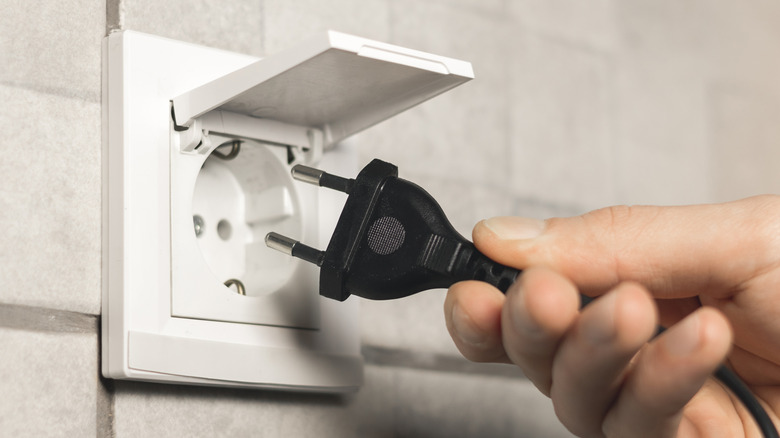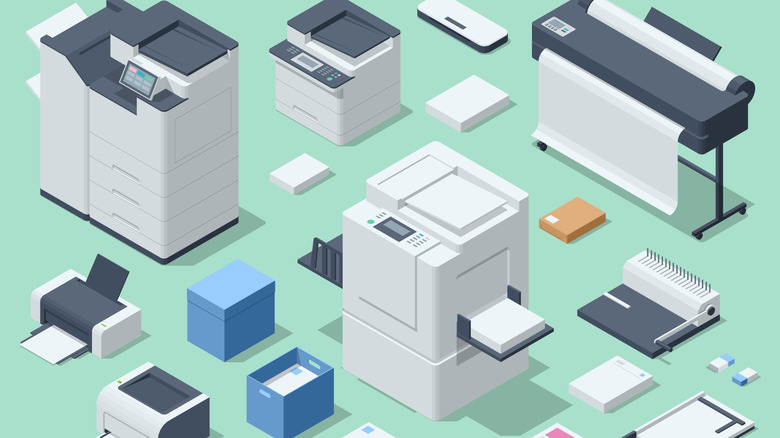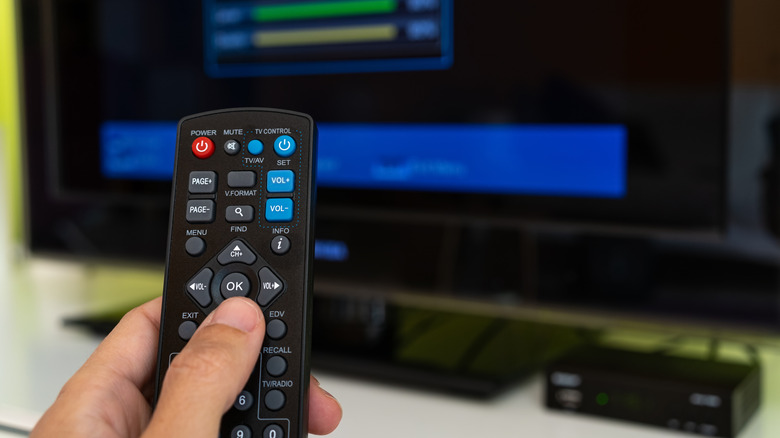Energy Vampires: 5 Appliances That Are Running Up Your Electric Bills
The energy marketplace is one with plenty of nuances. Some homeowners might have solar panels installed on their roof, and in some areas, you're entitled to sell back excess energy to the utility company. This can be helpful in keeping your home electricity bill low. However, neither solution fixes a particularly pesky problem that people across the world frequently face in their house. Most people are familiar with the practice of temporarily unplugging a router to reset the device and speed up the connection it fuels, but there are actually numerous other appliances that you should think of regularly unplugging. Unplugging a few key appliances when you're not using them can help reduce your electricity bill by a notable margin. Why? Well, it's because of a phenomenon that is sometimes known as the "energy vampire."
An energy vampire is an electronic device that draws power while technically being turned off. The result is a steady addition to your home's electricity usage, even when you're not there or not actively using these appliances. Knowing the devices that draw the highest volume of electricity can help you put a stop to the issue, though. The Department of Energy suggests that a homeowner who unplugs devices when they aren't in use can save up to $100 per year, amounting to as much as 10% of your total electricity draw for the year. The motivation is therefore crystal clear.
Your TV
Turn reported on data from a 2005 DOE study regarding standby mode energy draws. It found that the plasma TV was the biggest energy vampire in a typical household, drawing an average standby cost of $159.76 per year. With changes in energy ratings and the technology itself, this is no longer an accurate estimate of what a modern television might waste. Television technology has advanced quite a bit in the years since, but the TV was, and remains, a significant consumer of electricity. Today, the smart TV has taken over the mantle as the modern staple, and it, too, draws a lot of energy when sleeping. Smart TVs feature a number of additional functions built into the device, making them particularly hungry when it comes to power draw figures. This can ultimately add up to as much as 20% of the TV's total energy draw.
Electric Radiators Direct found in 2025 that UK users can expect to add £14.54 to their annual electricity costs when allowing a TV to sit in standby mode for the year. Greenmatch came up with a smaller figure of £4.94 for British TV viewers. Naturally, however, the larger your TV, the more you can generally expect it to draw in both operating and standby modes.
A good workaround for this problem is to connect your television's power source to the outlet through an accessible extension cord. Selecting one with an easy to use on/off switch will give you the ability to kill the connection once the device once is turned off. Unplugging the TV isn't always easy, but flicking a switch to cut the power can be a simple solution.
Video game consoles
Video game consoles of all sorts have long been a big electricity drain. NRDC noted in 2014 that the Xbox One drew almost 16 watts of power in standby mode over the course of a year. Importantly, that's just one console, and with numerous others in action, it's easy to imagine these standby mode costs skyrocketing. In 2022, UK-based Eurogamer found that the PlayStation 5 would cost £9.83 per year when left in rest mode, while the Xbox Series S ballooned up to £22.60. When properly turned off, even without needing to be unplugged, both consoles consume about 0.2 W.
20% of the world's consumers either own or have direct access to at least one game console (via a 2022 YouGov study), and in 2015 a Pew Research Center study found that 40% of American adults owned a game console. A vampire draw from a gaming console is definitely a problem area worth exploring. Adding a switched extension cord into the power chain is an ideal solution here, just as is it for other devices. However, perhaps the more subtle electricity issue that consoles bring into the conversation surrounds their typical usage. Modern consoles are multifunctional devices, so adding Netflix or Hulu apps makes sense on a functional level. But a console draws as much as 35 times the power required of a streaming dongle like an Apple TV device, Roku, or Fire Stick. Opting for the lower powered solution will retain ease of use, while drastically lowering your costs.
Printers
Printers are among the most noticeable energy vampires in a typical household. The BBC reported in 2022 that British households could expect to save £3.81 per year by unplugging their printer instead of letting it sit idly when not in use. At just a few cents per month, this might not sound like something to get worked up about. But the principle is what matters most. If you're leaving your printer in standby mode while not in use, you're almost certainly doing the same with many other devices found around the house. These all add up, and if you have more than one printer connected at all times (perhaps one for general use and one for a home office setup), you'll quickly be multiplying that wasted figure.
When selecting a new printer, you'll be faced with an important choice. The ink versus toner debate is a heated one, and for numerous reasons. The fact is that different user requirements push buyers in one direction or another, yielding a more personalized result in the process. Electricity usage is one area the debate naturally centers on. On the whole, laser printers use more electricity than ink jet models, but neither is especially power-hungry, at least if you avoid using stand-by mode. If you're not someone who prints a lot, unplugging the device between uses is your best bet.
Set-top boxes, DVD and Blu-ray players
Media playback tools are big culprits when it comes to phantom energy usage. These boxes tend to be left in place under the TV without much if any interference. The only media device you're likely to unplug on a routine basis is the router, but the remainder of your boxes (cable, satellite, legacy media tools like a VCR, and even your DVD and Blu-ray players) tend to sit idly by, waiting to be engaged. Your cable box alone costs around $50 per year to power if it's left plugged in at all times. In the modern world of internet archives, streaming services, and on-demand playback, there's really no need to have your media tools connected to the outlet when you're not using them.
The router that delivers your home's Wi-Fi coverage is another important point of consideration. Unplugging it when you leave for a vacation or long day away isn't just a choice that can save you money. By disconnecting the router, you'll eliminate a malignant actor's ability to crack into your network while you're not there to spot them. It's possible to plant spyware in your system remotely, but this requires access. Unplugging your home's connection to the internet is the best analog solution to this risk.
Small kitchen appliances
The kitchen is filled with tons of appliances that help make your life easier. From large equipment like the dishwasher to smaller appliances such as coffee makers and air fryers, many pieces of technology in this room help streamline your cooking and cleaning tasks, as well as your general home comfort. Both large and small appliances tend to be left plugged in at all times. These tools often get used many times throughout the day. Whether it's the microwave, electric kettle, or something like a baby bottle washer seeing frequent use, unplugging the device seems like an inconvenience. The Department of Energy noted in 2022 that unplugging small kitchen appliances can save you $10 to $20 every year in unnecessary electricity charges. Add that into the long list of electronic devices that frequently draw current while sitting in standby mode, and you're looking at a healthy addition to your bottom line.
Some of the worst culprits are exactly what you'd expect. Coffee makers that feature auto-start options and long-running hot plate functions, as well as just about any tool that features a display screen, are high on this list. Your microwave, for instance, likely shows the time on an always-on screen. This means that it isn't just drawing power to provide quick functionality when called upon, but actively performing a role while not in use.





